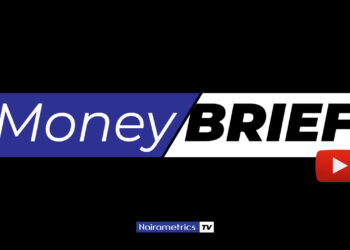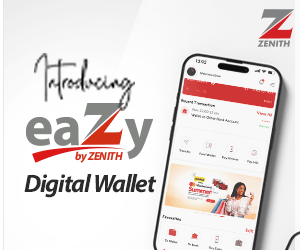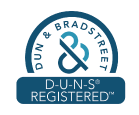In the world of day trading, one of the major trading principles that traders do their absolute best to uphold is to avoid a margin call. In fact, according to Demilade Ogunkoya, a crypto day trader, he explained that a margin call could cause a heart attack to traders who go “all in,” as the call informs them of a possible liquidation, which ultimately leads to a total loss of funds.
Within the context of investing, margin is the practice of taking a loan from a brokerage firm for the purpose of buying stocks and other assets. Margin can increase the buying power of an investor by allowing them to make larger investments and higher potential profits.
Dr. Hans Boateng, the founder of The Investing Tutor, stated, “Margin is an incredible tool to provide investors with access to additional capital. It works wonders in an upward market. It becomes dangerous in a downward market if you don’t have savings in the event of a margin call.”
What is a Margin Call?
A margin call is a warning that you need to bring your margin account back into ‘good standing’. It occurs when the value of an investor’s margin account falls below the broker’s required amount. It is also usually an indicator that one or more of the securities held in the margin account has decreased in value.
Margin calls can only occur when an investor’s margin account contains securities bought with borrowed money. It is set up in such a way that it is a combination of the investor’s own money and money borrowed from the investor’s broker.
When a margin call occurs, the investor must choose to either deposit additional funds or marginable securities in the account or sell some of the assets held in their account. This means that the investor in question might have to deposit cash or additional securities into his account, or might need to sell securities to increase the ratio of assets he owns entirely to the amount he borrowed.
A margin call also refers specifically to a broker’s demand that an investor brings up their position to the minimum value, known as the “maintenance margin.”
How it works
There are different types of margin calls which are based on the type of account you have and the type of asset that you are trading. Regardless of the account type or what you may be investing in, once a margin call has occurred, you’ll be required to bring the account back to the maintenance margin.
If the margin call is not met quickly enough (usually between 2 to 5 business days) then your brokerage may sell out of your positions, which could result in what is called a taxable event.
A taxable event is where any action or transaction that may result in taxes owed to the government. Common examples of federal taxable events include receiving a payment of interest and dividends, selling stock shares for a profit, and exercising stock options. In this case, when the broker sales your positions, you also get taxed by the government.
There are three main types of margin calls: maintenance margin calls, Regulation T calls, and minimum equity calls. Each of these margin calls can be triggered for different reasons. Here’s a breakdown of each below.
- Maintenance margin call: A maintenance margin call refers to the margin requirement to stay in a position. For example, if you have $10,000 invested in Jibsss enterprises, and your brokerage sets the maintenance margin requirement at 25%, it means that the equity in your account must not fall below $2,500.
- Regulation T call: This type of call refers to the requirements needed to begin a margin trade and can occur when an investor makes a transaction in a margin account without meeting the initial 50% minimum equity requirement. This is sometimes referred to as a Fed Call.
- Minimum equity call: This is the lowest amount needed to open and maintain a margin account. This call is sometimes known as an exchange call.
What happens if you cannot pay a Margin Call?
The margin call requires you to add new funds to your margin account. If you do not meet the margin call, your brokerage firm can close out any open positions in order to bring the account back up to the minimum value. This is known as a forced sale or liquidation.
Your brokerage firm can do this without your approval and can choose which positions to liquidate. In addition, your brokerage firm can charge you a commission for the transactions and any interest due on the money loaned to you in the first place.
It is important to remember that as a trader, you are responsible for any losses sustained during this process and your brokerage firm may liquidate enough shares or contracts to exceed the initial margin requirement.
Forced liquidations generally occur after warnings have been issued by the broker, regarding the under-margin status of an account. Should the account holder choose not to meet the margin requirements, the broker has the right to sell off the current positions.
According to Demilade, who was sharing his experience when he had a margin call, “I had to look everywhere to borrow money which I could have potentially lost. It made me irrational as a trader in that moment and my decision making was off. Lucky, I found a friend to borrow me and also, the market began to move in my direction.”
How to avoid Margin Calls
Demilade explained that although margin calls regularly occur, especially in the cryptocurrency space, the ultimate way to avoid this worrying call is by applying proper risk management on every position a trader takes. He was able to share some of his risk management technics/methods which includes;
- Leave a cash cushion in your account: Rather than investing all of your money in securities, setting aside some of your money as cash can help prevent margin calls. That’s because cash’s value is stable and it is always entirely owned by you.
- Plan for volatility: Diversify your portfolio so that it can withstand market fluctuations without dipping below the maintenance margin.
- Make regular debt repayments: Interest charges are typically posted to your margin account monthly. Margin loans don’t normally have a set repayment schedule, though, meaning you choose when you make repayments. By paying off interest or part of your loan each month, you can keep it from ballooning out of control.
- Set your own minimum: Determine your own maintenance margin above your brokerage’s. When your account reaches that limit, move financial resources over to avoid a margin call and to prevent your brokerage from selling any securities.
- Use Stop Losses and Take Profits: When taking positions, the use of stop losses and take profits, as a mitigating tool to against downsides helps to prevent a scenario of unchecked losses and margin calls altogether. These tools are to me applied for every position taken.
Bottom line
It’s common for forex trades to be almost fully margined. In effect, the broker gives you the chance to make trades with money you don’t have. The Commodity Futures Trading Commission (CFTC) limits leverage on major currencies to 50:1.
Traders should proceed with extreme caution before placing trades with such high levels of leverage. Even the slightest drop in the value of your active trades could wipe out your entire finances






















